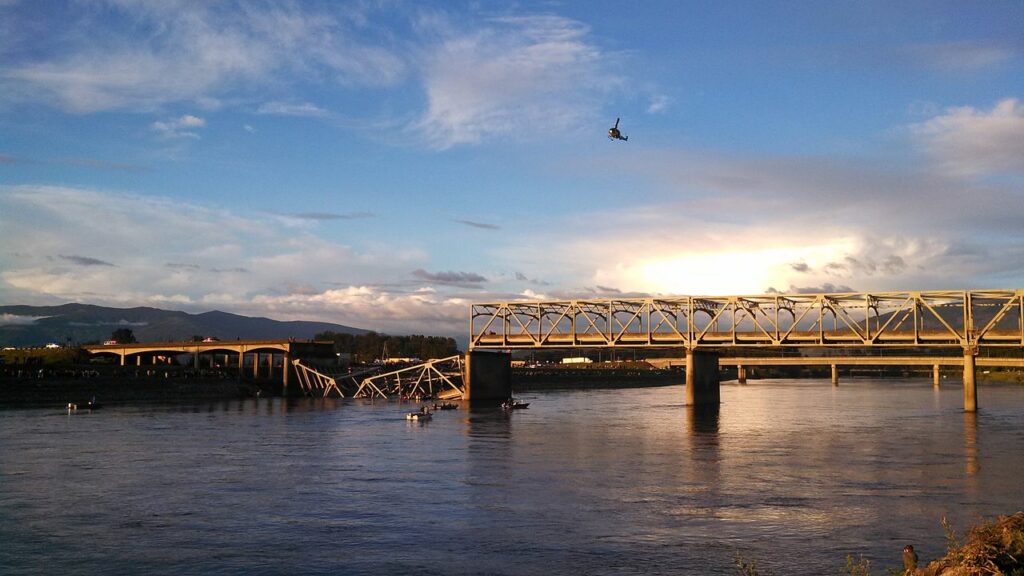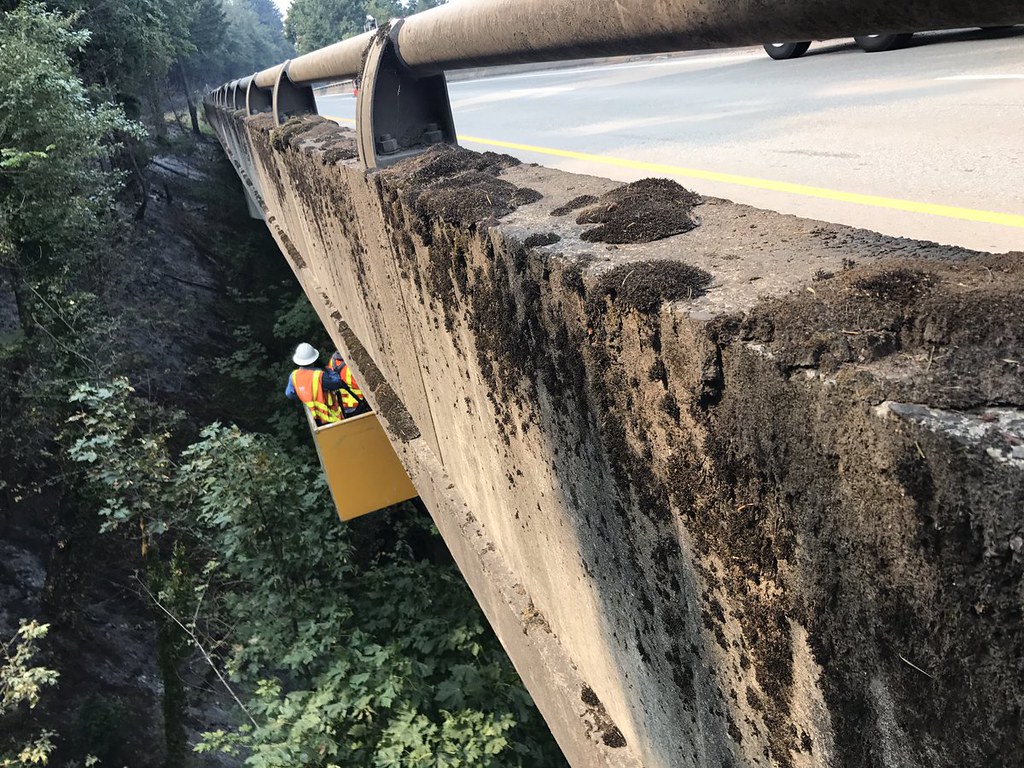Despite substantial federal funding available to address “crumbling roads and bridges,” our infrastructure’s state of repair is an ongoing issue, and climate change is only adding to the problem.

You don’t have to look far in history to see major infrastructure failures around the country. The same day as the Key Bridge collapse (a tragedy that was likely not due to a state of repair issue), in the Greater New Orleans metro area, the Chalmette Paris Road Bridge was closed due to hazardous structural integrity issues (i.e. it could collapse at any time). There also has been multiple notable roadway infrastructure failures in the past two decades: the I-95 bridge collapse in Philadelphia, PA; I-85 bridge collapse in Atlanta, GA; I-5 bridge in Skagit, WA; DC-295 in Washington, DC; I-25 in Pueblo, CO; I-64 in Norfolk, VA; and most notably I-35W in Minneapolis, MN.
For the Philadelphia, Atlanta, and DC cases, the bridges were structurally sound, but failed due to a catastrophic event without safeguards to protect the structures. For the Skagit, Pueblo, Norfolk, and Minneapolis, flawed design paired with a changing climate and mobility patterns (i.e. vehicle weight and size) led to structural failures. And if we look beyond roadways and towards other modes of transportation in the US, top of mind is mechanical failures leading to East Palestine, OH train derailment, the 2007 DC MetroRail crash at Fort Totten (and again on DC MetroRail in 2015 with a train fire at L’Enfant Plaza), the 2017 NYC Subway Summer of Hell, and even a failing seawall that cofunctions as a pedestrian walkway at DC’s famed Tidal Basin (#ripstumpy).
What’s going on with our state of repair?
There are compounding factors that are threatening our nation’s mobility infrastructure. The most notable threat is our climate. With ever-fluctuating temperatures, precipitation (or lack thereof), and major weather events, the structural integrity of our infrastructure is being challenged. When originally built, a lot of our nation’s infrastructure was designed with the assumption of historical climate precedent going forward. Fluctuating temperatures affect building material, while precipitation impacts foundational integrity. When also subjected to increasing extreme weather events that stress the infrastructure, wear and tear accelerates.
Then there is the reality of changing travel patterns on our mobility system. A growing population paired with changing commuting patterns post-COVID pandemic that is stretching system demands for longer periods of time plus using different types of vehicles (that are bigger and heavier, including trains and ships) on our roadways, waterways, and railways is taking a toll on infrastructure designed with a different population and vehicle demand in mind.
There also are factors that are in the hands of transportation operators and decision makers. When the Silver Bridge collapsed between West Virginia and Ohio in 1967, one of the outcomes was the development of the National Bridge Inspection Standards. After the 1980 Skyway Bridge collapse, infrastructure design was altered for future projects to create structural redundancy and fortification. However, as alluded to earlier, changing climate and system demands may render design, maintenance, and inspection standards developed 40-60 years ago “functionally obsolete,” borrowing a term from bridge inspection standards. This also can be seen (or not seen) on the ground via the decreasing frequency and rigor of asset condition inspections.
And this can be attributed to a deteriorating focus on our transportation policy and investments aimed at fixing things first. There are leaders, such as Michigan Governor Gretchen Whitmer, who have made it a priority to rethink transportation policy and investments aimed at fixing things first, but unfortunately, that is still a troublesome rarity in light of these challenges to our nation’s mobility infrastructure state of repair. This is also paired with the lack of institutional knowledge at the federal and state legislative levels, deferring often to state DOT for guidance on policy and investments. Unfortunately, those same policies and investments are opaque to decision makers and the public, if not the state DOT itself not understanding their origins and being flexible enough to rethink strategies that haven’t worked for decades to yield different results.

What’s our path forward?
President Biden made commitments to rebuild the fallen Key Bridge within hours of the event, supported by key Congressional appropriators. There is a need for that same urgency across the entirety of the transportation system’s state of repair, which has breached $1 trillion in deferred maintenance, before disasters occur. There also is a need to rethink investment strategies and policies that encourage a reduction in vehicle miles traveled, which is corollary to reducing transportation’s GHG emissions, and in turn, slowing down climate change’s impact on our transportation system.
While decision makers hash out policies and investment strategies, the transportation industry needs to double down how they assess the state of repair in light of changing conditions. That means reassessing our nation’s assets and the climate and mobility demand assumptions that play into an asset’s condition. Digging into this further, that means understanding implications on existing and future building materials and asset designs, plus looking at how and what frequency an asset is assessed and future-proofed from catastrophic failure (whether by deterioration or an extreme event (whether induced by nature or not).
The post Building back better: Reflections on the state of infrastructure repair in the U.S. appeared first on Transportation For America.











